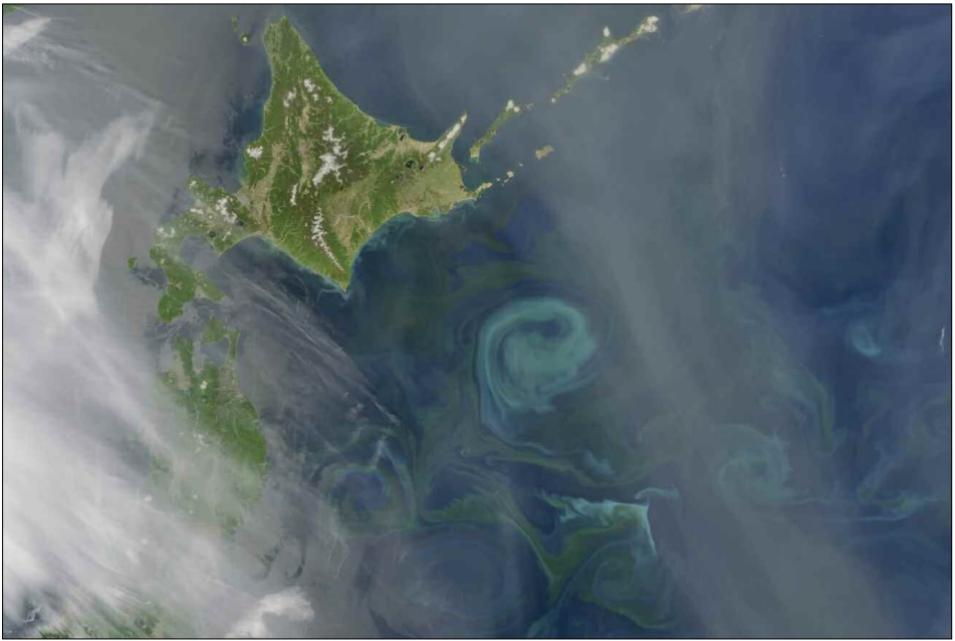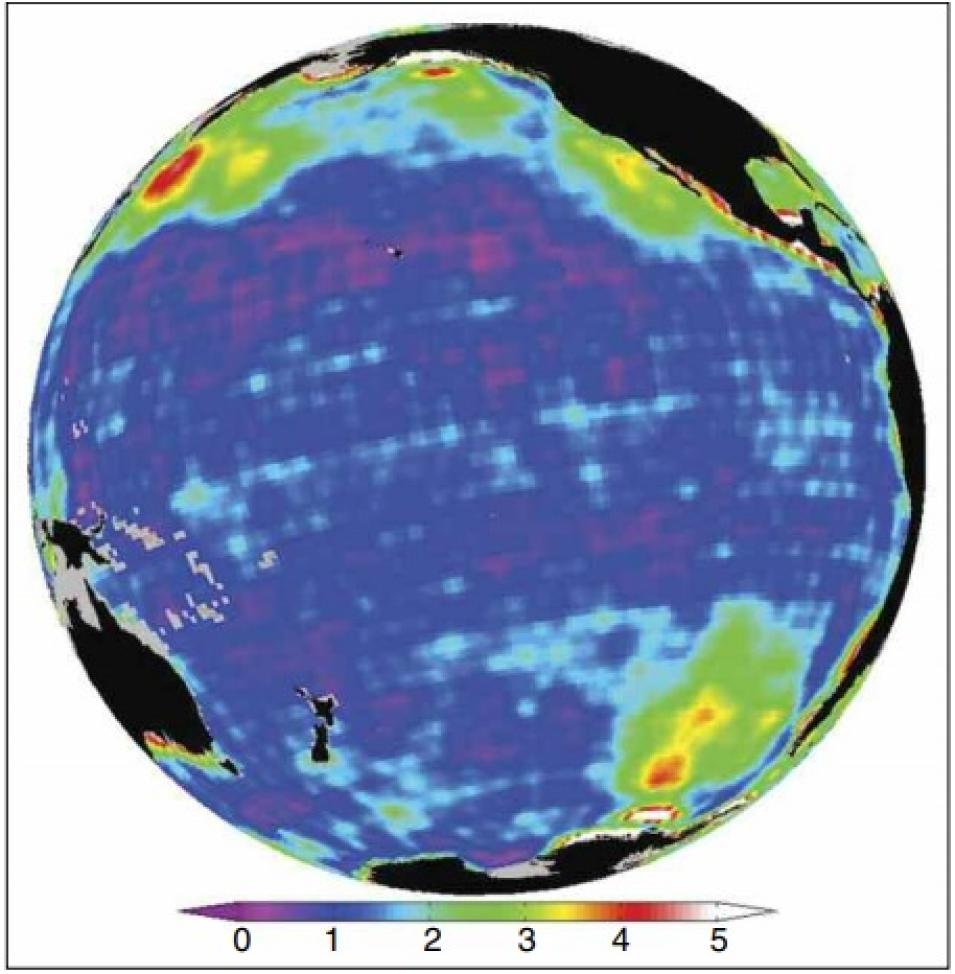The strongest weak signal
Victor Zlotnicki, an oceanographer at NASA's Jet Propulsion Laboratory, said there is good reason for Park to be validating GRACE ocean bottom pressure estimates with data from the Kuroshio Current. He said, “The Kuroshio is one of the strongest signals among weaker ocean signals, so it is a good one to study. Let’s say, for example, that it rains cats and dogs over the Amazon Region in South America, and the rain makes its way southward through the Amazon River to the Orinoco basin. That’s a huge signal—about twenty centimeters [eight inches] of water, a huge pile of water. Ocean signals, on the other hand, are the weakest. Changes in water mass in the ocean are in the order of merely two to five centimeters [one to two inches].”
Park compared the data from his array of ocean bottom pressure sensors to GRACE data from NASA's Physical Oceanography Distributed Active Archive Center (PO.DAAC). Park said, “I was pleased because the correlation between the two data sets was quite good.” The satellite had less accurate estimates for ocean features smaller than its maximum resolution of 300 kilometers (162 miles). “It can’t catch ocean features, like eddies and meanders, that are smaller than that,” Park said. “But the experiment confirms GRACE as an ideal instrument to use when looking at processes in a much bigger picture.” Zlotnicki added, “The strength of satellites is their ability to see the whole globe in days to weeks, or one month in the case of GRACE; on the other hand, most of the vast expanses of sea floor have never seen a bottom pressure recorder.”
From ocean bottom to sea surface
One such big ocean process that scientists are watching closely using GRACE is sea level rise, a gauge for how global climate is changing. “Truth is, the average bottom pressure over the world’s oceans is going up. That means the ocean is getting a little bit more water all the time,” Zlotnicki said. “Sea level is rising at about three millimeters [0.1 inch] per year. Part of that is due to the expansion of seawater because of heat. The other part is due to the addition of water from glaciers in Greenland, Antarctica, and continental regions such as Alaska.” These immense glaciers, like most of the world’s glaciers, have been shrinking because of persistent climate warming. Their meltwater flows into the ocean, causing sea level to rise.
Previously, satellite altimeters could measure changes in sea surface height, but could not distinguish between effects from heat expansion and effects from the additions of glacier melt water. However, comparing ocean bottom pressure estimates with sea surface height measurements allows researchers to single out heat-related sea level change. “GRACE is a totally new measurement,” Zlotnicki said. “We studied the world’s oceans by keeping track of sea surface temperature for the last twenty years, and we have tracked sea surface height for over fifteen years. But since 2003 we have GRACE and its measurement of the Earth’s time-varying gravity. It is changing the way we study the oceans.”
References
Jayne, S.R., N.G. Hogg, S.N. Waterman, L. Rainville, K.A. Donohue, D.R. Watts, K.L. Tracey, et al. 2009. The Kuroshio Extension and its recirculation gyres. Deep Sea Research Part I: Oceanographic Research Papers 56. doi:10.1016/j.dsr.2009.08.006
Park, J.H., D.R. Watts, K.A. Donohue, and S.R. Jayne. 2008. A comparison of in situ bottom pressure array measurements with GRACE estimates in the Kuroshio Extension. Geophysical Research Letters 35, L17601. doi:10.1029/2008GL034778
Song, Y.T. and V. Zlotnicki. 2004. Ocean bottom pressure waves predicted in the tropical Pacific. Geophysical Research Letters 31, L05306. doi:10.1029/2003GL018980
For more information
NASA Physical Oceanography Distributed Active Archive Center (PO.DAAC)
Gravity Recovery and Climate Experiment (GRACE)
Kuroshio Extension System Study
| About the remote sensing data |
|---|
| Satellite | Gravity Recovery and Climate Experiment (GRACE) | |
| Sensor | K-Band Ranging System (KBR) | |
| Data set | GRACE Mass Grids | |
| Resolution | 1 degree | |
| Parameter | Ocean bottom pressure | |
| DAAC | NASA Physical Oceanography Distributed Active Archive Center (PO.DAAC) | |


